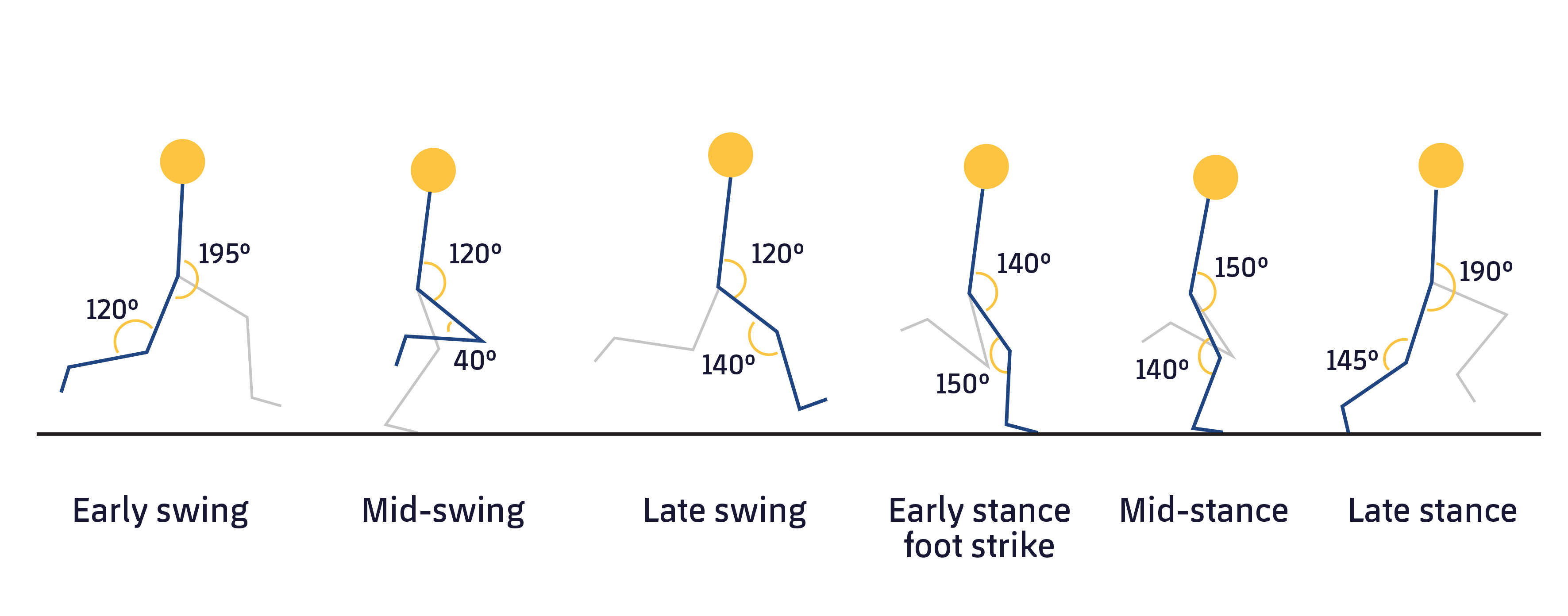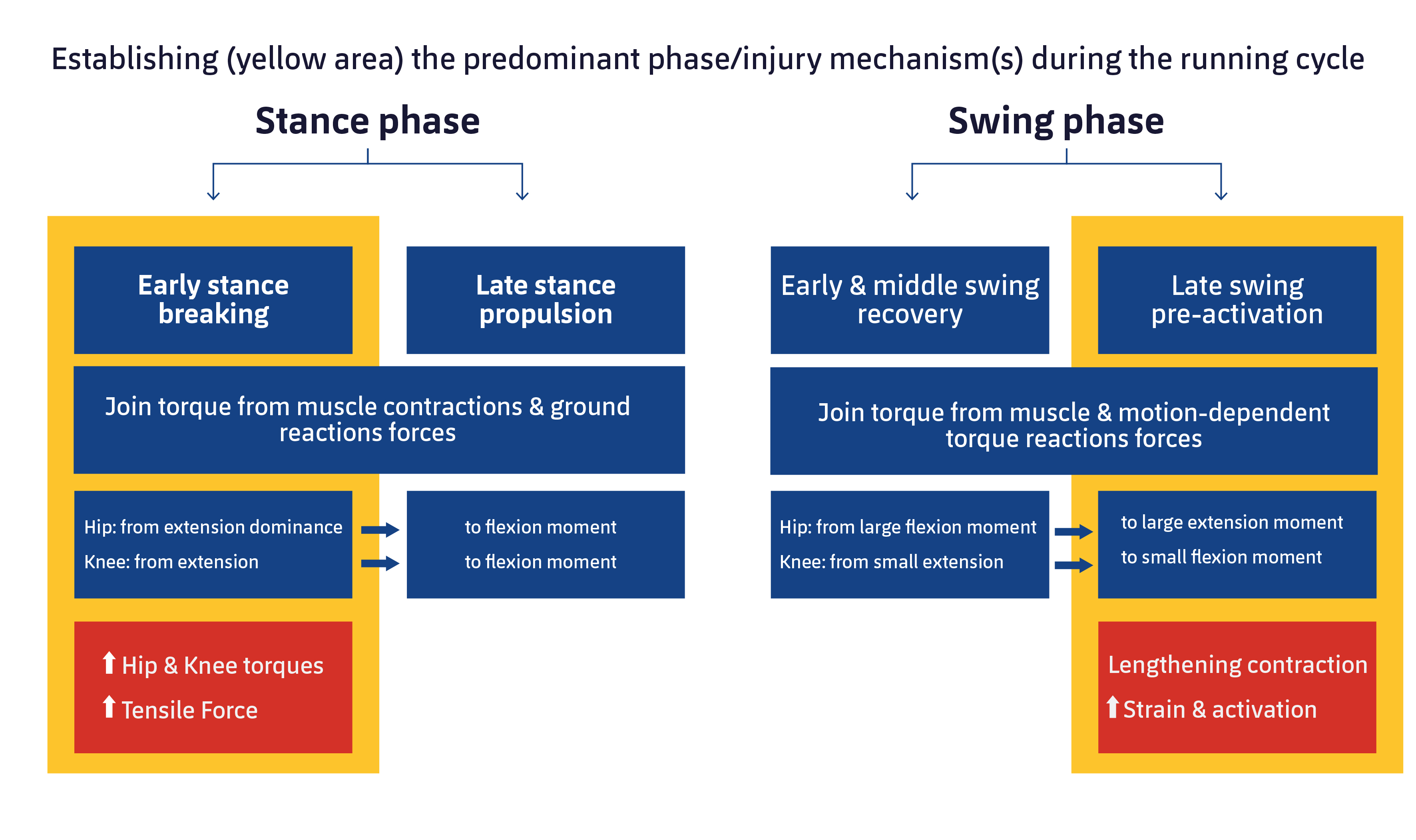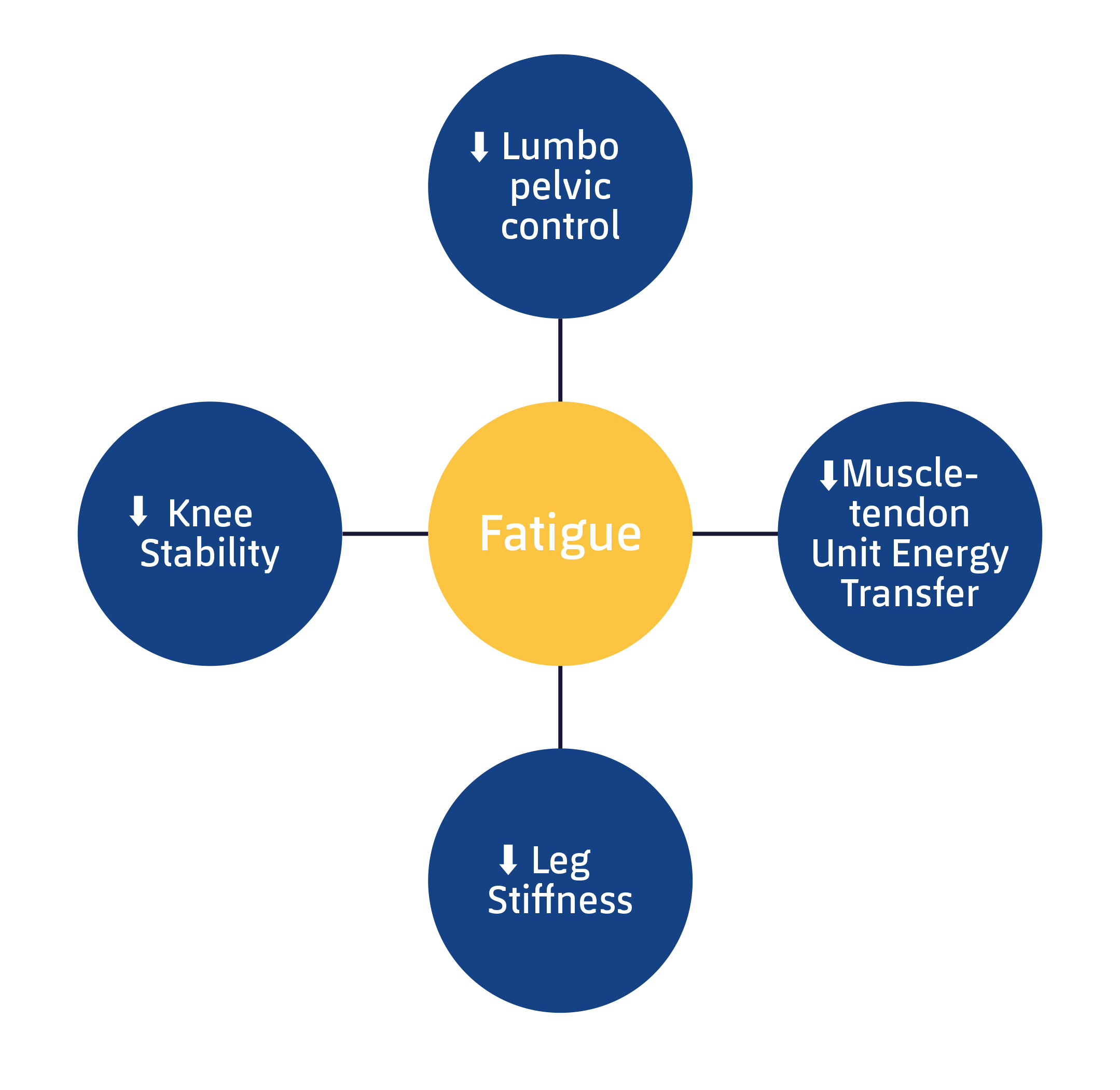Hamstrings injury is the most frequent muscle injury in sports that require high speeds, such as football,1 rugby2 or American football.3 As an example, in football it represents 37% of all muscle injuries.4 What is more, one of the main problems is its high recurrence rate, given that between 12% and 33% of players who have had a hamstrings injury relapse.5 Even though a lot of research and resources have taken place to this matter in the past few years, the occurrence of injuries in football seems to be higher (4% per year), as shown in a study that analysed 36 European clubs during 13 seasons.6
Therefore, due to the impact an injured player has on both an economic and sporting level, a new review5 has recently been published, involving among others, Marc Guitart, member of F.C. Barcelona’s performance department, as well as other experts such as Dr. Julio Calleja or Dr. Pedro E. Alcaraz, in which they analyse the possible mechanisms that determine hamstrings injury.
Running mechanics: in which phase is there a higher risk of injury?
At the beginning of the review, the authors elaborate on the biomechanical patterns of running at maximum or below maximum speeds, emphasising the demands in the long head of the biceps femoris, given that it is the most affected muscle in hamstrings injury.7
As it can be seen in Figure 1, the running cycle comprises two phases: stance and swing. Along the run, the hamstrings go through a lengthening-shortening cycle, and most researchers suggest that at the end of the swing phase hamstrings are more likely to get injured.8,9 This could be due to the fact that (and as it has been shown in different studies), maximum muscle activity occurs at the end of the swing phase.10,11 Moreover, the asynchronous activity of the hamstrings during high-speed sprints seems to be a critical point, because at the end of the swing phase, the biceps femoris activity increases by 67%, while the semitendinosus and semimembranosus by only 37%.12 The researchers speculate that “the massively increased demand in the biceps femoris at maximum running speeds can result in it tending to get injured more frequently than the other hamstring muscles.”

Despite this evidence, the authors point out that most studies about hamstrings mechanics have been carried out under no fatigue conditions, although this is one of the main risk factors of hamstrings injury.13,14 Therefore, these studies ignore one of the main mechanisms that increase the risk of injury: structure and muscle alterations in the muscle induced by the fatigue caused by actions with high mechanic demands, such as decelerations and eccentric actions.
Thus, even though it is believed that the risk of injury is higher at the end of the swing phase, the researchers’ highlight “that this speculation has not been established in the context of a real situation”. Furthermore, other research suggests other factors that could also increase the risk of injury during the first stance phase, because there are a maximum hip extension and peak strength of the biceps femoris during this phase.15,16 For this reason, the authors suggest that there are critical elements for the hamstring muscle involved in both phases. Even a study published in 2017 by Lui et. al.17 suggests these two phases could be considered as one, and what would be called the stance to swing transition phase (Figure 2), given that the hamstrings are involved in hip extension and knee flexion during the whole phase. With all this in mind, either at the end of the swing phase or the beginning of the stance phase, the load on the biceps femoris is higher, which increases the risk of injury.

How does fatigue, and the muscle and activation function relate to?
During high speed running in a fatigue context, if there were an imbalance in the muscle activation speed, the muscle that is most activated or that activates before, will have a higher metabolic demand and it will become tired before. It has been observed that as the running speed increases, the biceps femoris activates before the semitendinosus,10 which creates complex neuromuscular coordination patterns that can increase the risk of injury.
Also, different muscle activation patterns resulting from fatigue seem to cause biomechanical changes. For example, it has been observed that when an athlete performs a sprint and he is fatigued, the hip and knee flexion angle is reduced at the end of the swing phase. This causes a higher pelvic tilt,18 lengthening the biceps femoris during the run, which makes it more vulnerable. Another consequence of fatigue would be adopting a running pattern called “Groucho”: a way of running in which the knees remain flexed along with the stride.19 This would result, according to the authors, in an increase in energy expenditure during the run, causing a decrease in the efficiency of the movement and a higher load of the muscular contractile units of both the hamstrings and the adjacent structures (such as gluteus medius), which would increase the risk of injury. Therefore, this alteration of the lumbopelvic structure could cause the pelvis to tilt forward, which could be a risk factor (Figure 3).18

Conclusion
In short, changes in muscle activation patterns can increase energy expenditure in those muscles that are most activated, such as the biceps femoris when the athlete performs high-speed sprints that could intensify fatigue. Moreover, fatigue seems to condition the lower limbs biomechanics, adopting a less efficient running pattern that, together with a lumbopelvic instability, could lengthen the biceps femoris, making it more vulnerable.
Based on what has been presented, the researchers state that it is essential to continue to research to clarify the behaviour of the tendon and muscle structure under fatigue conditions, given that, as it has been seen, it is a determining factor in the development of asynchronous patterns of muscle activation and biomechanics. For that reason, they’ve highlighted that it is necessary to accurately define its influence in both phases of the running cycle to have a better understanding of the mechanisms involved in the injury.
BIHUB team
References:
- Ekstrand J, Hägglund M, Waldén M. Injury incidence and injury patterns in professional football: the UEFA injury study. Br J Sports Med. 2011
- Brooks JHM, Fuller CW, Kemp SPT, Reddin DB. Epidemiology of injuries in English professional rugby union: part 1 match injuries. Br J Sports Med. 2005
- Feeley BT, Kennelly S, Barnes RP, Muller MS, Kelly BT, Rodeo SA, et al. Epidemiology of National Football League Training Camp Injuries from 1998 to 2007. Am J Sports Med. 2008
- Ekstrand J, Hägglund M, Waldén M. Epidemiology of Muscle Injuries in Professional Football (Soccer). Am J Sports Med. 2011
- Huygaerts S, Cos F, Cohen DD, Calleja-González J, Guitart M, Blazevich AJ, et al. Mechanisms of Hamstring Strain Injury: Interactions between Fatigue, Muscle Activation and Function. Sports. 2020;
- Ekstrand J, Waldén M, Hägglund M. Hamstring injuries have increased by 4% annually in men’s professional football, since 2001: a 13-year longitudinal analysis of the UEFA Elite Club injury study. Br J Sports Med. 2016;
- Askling CM, Tengvar M, Saartok T, Thorstensson A. Acute First-Time Hamstring Strains during High-Speed Running: A Longitudinal Study Including Clinical and Magnetic Resonance Imaging Findings. Am J Sports Med. 2007 Feb 1;35(2):197–206.
- Kenneally-Dabrowski CJB, Brown NAT, Lai AKM, Perriman D, Spratford W, Serpell BG. Late swing, or early stance? A narrative review of hamstring injury mechanisms during high-speed running. Scand J Med Sci Sports. 2019
- Howard RM, Conway R, Harrison AJ. Muscle activity in sprinting: a review. Sport Biomech. 2018
- Higashihara A, Ono T, Kubota J, Okuwaki T, Fukubayashi T. Functional differences in the activity of the hamstring muscles with increasing running speed. J Sports Sci. 2010
- Higashihara A, Nagano Y, Ono T, Fukubayashi T. Relationship between the peak time of hamstring stretch and activation during sprinting. Eur J Sport Sci. 2016
- Silder A, Thelen DG, Heiderscheit BC. Effects of prior hamstring strain injury on strength, flexibility, and running mechanics. Clin Biomech. 2010
- Opar DA, Williams MD, Shield AJ. Hamstring Strain Injuries. Sport Med. 2012;42(3):209–26.
- Marshall PWM, Lovell R, Jeppesen GK, Andersen K, Siegler JC. Hamstring muscle fatigue and central motor output during a simulated soccer match. PLoS One. 2014;
- Mann R, Sprague P. A Kinetic Analysis of the Ground Leg During Sprint Running. Res Q Exerc Sport. 1980
- SCHACHE AG, DORN TIMW, BLANCH PD, BROWN NAT, PANDY MG. Mechanics of the Human Hamstring Muscles during Sprinting. Med Sci Sport Exerc. 2012;44(4).
- Liu Y, Sun Y, Zhu W, Yu J. The late swing and early stance of sprinting are most hazardous for hamstring injuries. J Sport Heal Sci. 2017;
- Small K, McNaughton LR, Greig M, Lohkamp M, Lovell R. Soccer fatigue, sprinting and hamstring injury risk. Int J Sports Med. 2009
- Cormack SJ, Mooney MG, Morgan W, McGuigan MR. Influence of Neuromuscular Fatigue on Accelerometer Load in Elite Australian Football Players. Int J Sports Physiol Perform. 2013
KNOW MORE
CATEGORY: MARKETING, COMMUNICATION AND MANAGEMENT
This model looks to the future with the requirements and demands of a new era of stadiums, directed toward improving and fulfilling the experiences of fans and spectators, remembering “feeling” and “passion” when designing their business model.
CATEGORY: FOOTBALL SPORTS PERFORMANCE
Through the use of computer vision we can identify some shortcomings in the body orientation of players in different game situations.
CATEGORY: MEDICINE HEALTH AND WELLNESS
A health check must detect situations which, despite not showing obvious symptoms, may endanger athletes subject to the highest demands.
CATEGORY: FOOTBALL TEAM SPORTS
In the words of Johan Cruyff, “Players, in reality, have the ball for 3 minutes, on average. So, the most important thing is: what do you do during those 87 minutes when you do not have the ball? That is what determines whether you’re a good player or not.”
CATEGORY: MEDICINE HEALTH AND WELLNESS SPORTS PERFORMANCE
Muscle injuries account for more than 30% of all injuries in sports like soccer. Their significance is therefore enormous in terms of training sessions and lost game time.
DO YOU WANT TO KNOW MORE?
- SUBSCRIBE
- CONTACT
- APPLY
KEEP UP TO DATE WITH OUR NEWS
Do you have any questions about Barça Universitas?
- Startup
- Research Center
- Corporate